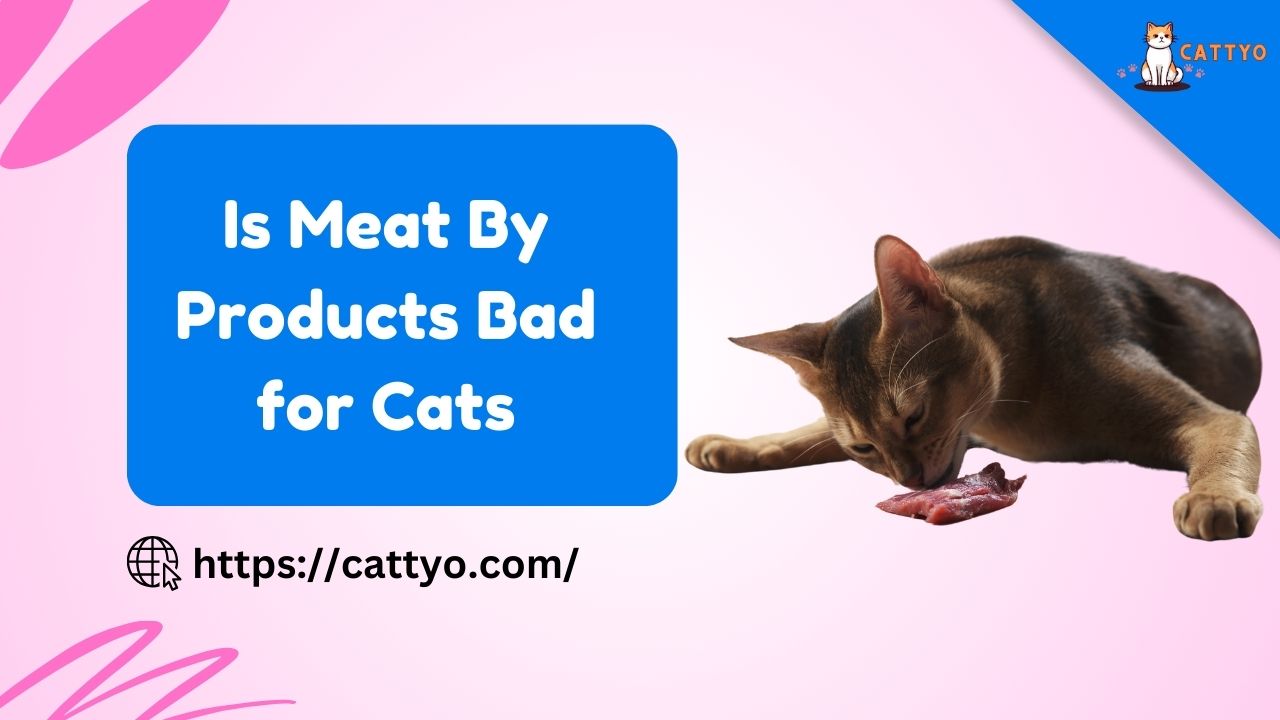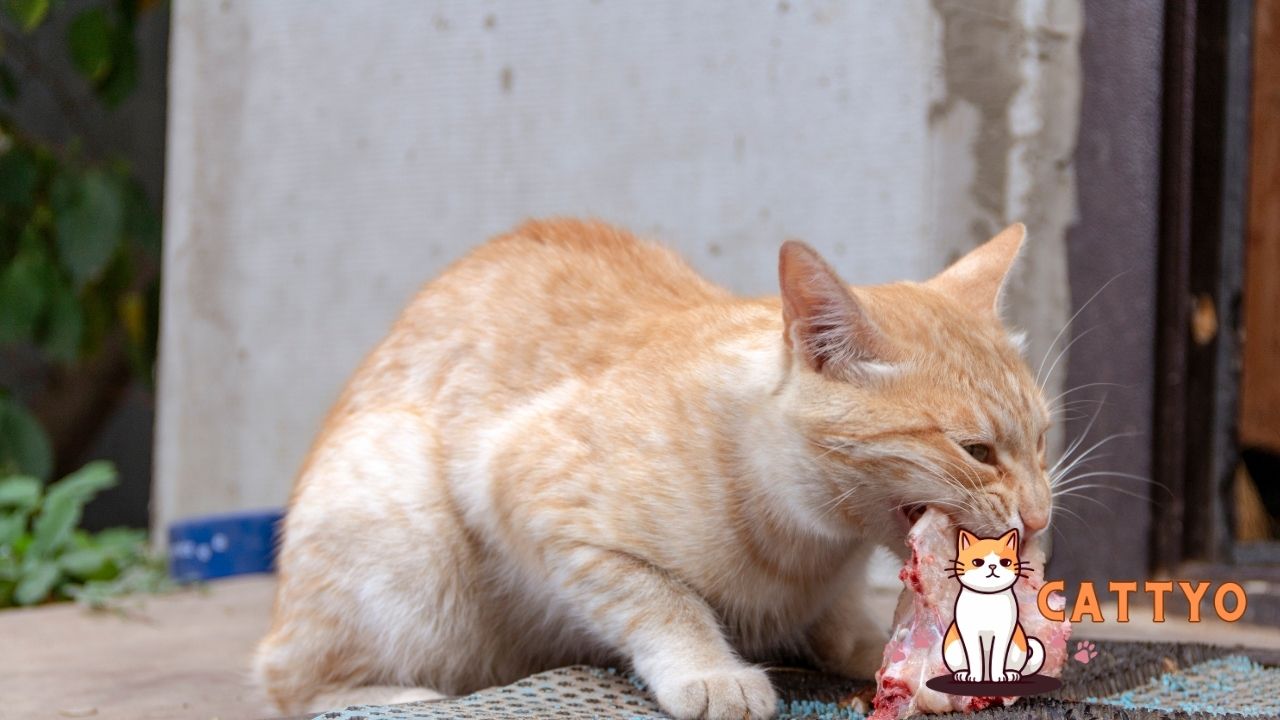Meat by-products are not inherently bad for cats, but the quality can vary. High-quality meat by-products, such as liver or heart, provide essential nutrients. However, lower-quality by-products may include less nutritious parts like beaks or feathers. It’s important to check the source and quality of the meat by-products in your cat’s food. High-quality pet food with clear protein sources is always preferable for optimal health.
If you’ve ever wandered down the pet food aisle, you’ve probably come across labels listing meat byproducts as one of the ingredients. It can sound a little sketchy, right?
Like, what exactly are we talking about when we say “byproducts”? Is it something you’d want to feed your cat?
Well, sit tight, because we’re diving into this meaty topic and trying to unravel the truth about meat byproducts in your cat’s food.
Is Meat By Products Bad for Cats?
Meat by-products are not necessarily bad for cats, but their nutritional value depends on the quality. High-quality meat by-products can provide essential nutrients, while lower-quality by-products may lack proper nutrition. Always ensure your cat’s food contains high-quality ingredients for optimal health.
- High-Quality By-Products: Nutrient-rich parts like liver or heart can be beneficial for cats.
- Low-Quality By-Products: Less nutritious parts, like beaks or feathers, may be included in lower-quality foods.
- Check Ingredient Sources: Always verify the quality of meat by-products in your cat’s food.
- Protein Source Matters: High-quality food with clear, named protein sources is ideal for your cat’s health.
- Balanced Diet: Cats need a balanced diet with appropriate protein levels, so ensure meat by-products are part of a well-rounded formula.
What Are Meat Byproducts, Anyway?
Let’s start with the basics. “Meat byproducts” is one of those terms that sounds like it’s hiding something. But it’s not as sinister as it might seem.
In pet food, meat byproducts refer to the parts of the animal that are used in the production of pet food that aren’t typically sold for human consumption. This can include things like organs (liver, heart, etc.), bones, and other tissues. It might sound gross, but these are still packed with nutrients that can be beneficial for your cat.
Does it sound weird? Sure. Is it dangerous? Not necessarily.
Here’s the thing: cats are obligate carnivores. They need animal-based proteins to thrive, and they have no problem eating parts of an animal that humans don’t usually go for.
Think about it this way—wild cats don’t turn their noses up at the “leftovers” after a hunt. In fact, they’d probably gobble up everything, bones and all, because those byproducts are nutrient-dense.
But, here’s the catch: the quality of those byproducts matters. Not all meat byproducts are created equal.
Are All Meat Byproducts the Same?
Not really. Some meat byproducts are high-quality, nutritious, and perfectly safe for your cat. For example, organ meats like liver and kidney are rich in essential nutrients like vitamins A and B, iron, and taurine (an amino acid that’s critical for heart health). These are great for your furry friend.
On the flip side, lower-quality meat byproducts might include things like feathers, hooves, or other inedible parts that offer little nutritional value. If the pet food you’re looking at uses these kinds of byproducts, you might want to think twice.
So, how do you know if the byproducts in your cat’s food are the good kind? Check the ingredients list. Look for specific mentions of high-quality animal organs, such as “chicken liver” or “beef heart.” If you just see the vague term “meat byproducts” with no specifics, it’s a bit of a red flag.
The Pros and Cons of Meat Byproducts in Cat Food
Let’s break it down a little further. Are meat byproducts a win or a fail for your cat’s diet? Here are a few pros and cons to consider:
Pros:
- Nutrient-Rich: Meat byproducts like organs are a great source of protein, fat, and essential vitamins and minerals.
- Less Waste: Using byproducts helps reduce food waste, which is a pretty sustainable approach.
- Affordable: Byproducts are usually less expensive than prime cuts of meat, which makes pet food more affordable.
Cons:
- Quality Control: Not all byproducts are high quality. Some pet foods might use less desirable parts that are not very nutritious.
- Potential Additives: Some lower-end pet food brands may add fillers, preservatives, or other artificial ingredients to mask the quality of their meat byproducts.
- Transparency Issues: If a brand is vague about what types of byproducts they use, it can be hard to tell what your cat is actually eating.
Hypothetical Scenario: Would You Eat It?
Imagine for a second that you’re walking through a market, and you see someone selling “beef byproduct stew” or something like that. Would you take a bite? You’d probably hesitate, right? After all, what exactly goes into that stew?
Now, if the seller were to explain that the stew is made from tender cuts of beef heart, kidney, and liver—packed with vitamins and minerals—would you feel better about it? Probably, right?
Well, that’s the same principle with meat byproducts in cat food. The more transparent the brand is, the easier it is to trust that what you’re feeding your cat is both safe and nutritious.
Table Of Comparing Meat Byproducts in Cat Food
The table comparing meat byproducts in cat food highlights the differences in quality and nutritional value between various meat byproducts.
It helps identify which byproducts, like liver and heart, provide essential nutrients for cats, and which lower-quality options, such as feathers or beaks, may offer less nutritional benefit.
This comparison guides cat owners in choosing higher-quality foods that support optimal feline health.
| Ingredient | Type of Byproduct | Nutritional Value | Potential Drawbacks |
|---|---|---|---|
| Chicken Liver | Organ Meat | Rich in vitamins A, B, and iron | None |
| Beef Heart | Organ Meat | High in protein and taurine | None |
| Chicken Feet | Bone and Cartilage | Source of collagen and minerals | Low nutritional density |
| Bone Meal | Bone | Calcium and phosphorus | Can be poorly processed |
| Feather Meal | Feather | Minimal nutritional value | Low quality |
Should You Be Concerned?
At the end of the day, whether or not meat byproducts are “bad” for cats depends on the quality of the byproducts in the food you’re buying.
High-quality meat byproducts can be a great source of nutrition for your cat, but cheap, poorly processed ones can lead to subpar meals. As with most things in life, it’s about balance—and, of course, reading the labels carefully.
If you’re unsure, don’t hesitate to consult your vet. They can guide you on the best type of food for your particular feline, based on their age, health, and nutritional needs.
FAQ Section
Q: Are meat byproducts in cat food safe?
A: Yes, as long as the byproducts are of good quality. Organ meats like liver and heart are nutrient-packed, but be cautious with brands that don’t specify the source or quality of the byproducts.
Q: Why do some pet foods list “meat byproducts” instead of specific organs?
A: Some brands prefer to use a general term like “meat byproducts” for marketing purposes or due to sourcing methods. Always check for more specific details if you’re concerned.
Q: Can meat byproducts cause allergies in cats?
A: It’s possible, but not common. If your cat has a sensitivity to certain meats, it might react to some byproducts, especially if the food contains a variety of meats. If you notice signs of allergies, consult your vet.
Closing Thoughts
So, is meat byproducts bad for cats? Not necessarily. In fact, many byproducts are a perfectly fine source of nutrients for your furry friend, especially if they come from high-quality sources.
However, like with any pet food ingredient, the key is to know what’s actually in the food and whether it aligns with your cat’s dietary needs.
As long as you’re mindful of the brand and the ingredients list, you can rest easy knowing you’re feeding your cat a healthy, balanced meal.





